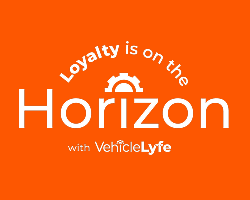 Before I get into the details of what version 5 of the Internet entails let’s define what versions 1 through 4 are in the incredible book of “How Alex perceives the world” in the chapter of Alex’s quick History of the Internet.
Before I get into the details of what version 5 of the Internet entails let’s define what versions 1 through 4 are in the incredible book of “How Alex perceives the world” in the chapter of Alex’s quick History of the Internet.
- Version 1.0 The Internet is born.
- Version 1.6 AOL (mostly) brings the Internet within reach of the public.
- Version 1.9 The public starts to use the Internet to communicate (email, chat rooms, message boards) and view porn (I know; porn. Capitalizing on desires created all sorts of innovation).
- Version 2.0 Websites.
- Version 2.1 Browsers…..that’s browsers plural like NetScape, Internet Explorer, etc.
- Version 2.2 eCommerce – buying goods online and having them delivered to your house.
- Version 3.0 Widescale consumer downloading (Napster).
- Version 3.1 Acceptance of paid downloading (iTunes).
- Version 3.2 Moving online content offline (iPod).
- Version 4.0 Web 2.0 is the popular name. Let’s call it individual voices speaking to masses (blogs, reviews, & forums become more popular).
- Version 4.3 Social Media.
Obviously I am looking at “the Internet” from the perspective of a history book.
Version 5.0….
Some significant things have happened in July of 2011. There are three things you should be aware of: NetFlix, Spotify, and Lion. NetFlix forced all of its users to choose between streaming movies, continuing to receive DVD’s by mail, or to have both. This move is noteworthy because NetFlix has determined consumers are ready to move off the physical movie hardware (the DVD) as their pricing clearly indicates favoring streaming services. I won’t get into all the details of how this probably increases their profitability, and let’s just agree they’re all about streaming. You don’t own the movies….you don’t even rent them.
Spotify came to the United States with 15 million music albums. Their subscription model is much like any other, but the amount of content, quality of music, and selection is enough for millions of Americans to sign-up immediately. You don’t own the music. This signifies we are moving away from the CD, iTunes, Amazon, and big hard drives to store all that downloaded music.
Lion launched yesterday and is a new operating system for Apple computers. Aside from the fact that it finally killed the save button, killed the DVD installs, continues a user experience across virtually all Apple devices and does a lot of other cool things it is the stepping stone for iCloud… what is Apple doing? With Lion and iCloud the hard drive becomes something mainly for backing stuff up or program files. It puts your content (documents, photos, music, videos, etc) in the cloud for unbridled use across all your devices.
Version 5.0 of the Internet is real-time shared media across all devices for a reasonable monetary fee.
Yes, there are plenty of other applications that got this started (EverNote, DropBox, etc – niche tools) but July 2011 is when this whole thing becomes the big turning point.
So aside from some fun stuff for us as consumers, how does this change our business?
Immediately; it doesn’t. Long-term; possibly quite a bit.
It signifies a full-fledged adaption of a single platform across multiple devices.
No longer can we be linear in our thoughts of the traditional website being our sole digital frontage. Consumers are going to be conditioned to expect the same experience across all their devices. That doesn’t mean a shiny widget on your website has to live on a mobile device, but it means we need to think our entire digital process through with critical questions: what is the purpose of this? What is the clear and concise call to action? What is the clear and concise reason for displaying this graphic/video? What is the message we are trying to convey and is it scalable beyond my computer? Does it work on a mobile device?
These are the questions you need to condition yourself to asking instead of things like “how pretty and SEO’d can we make this page?” We need to think critically, rationally, and multi-media-device-ly in order to adapt to this new version of the Internet.








